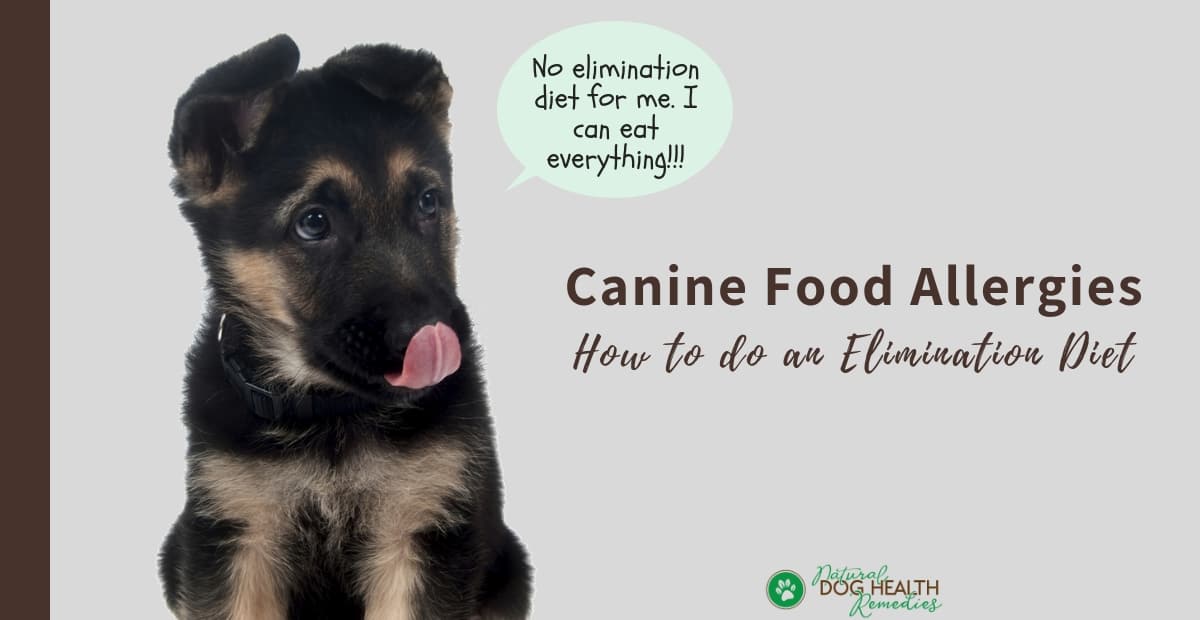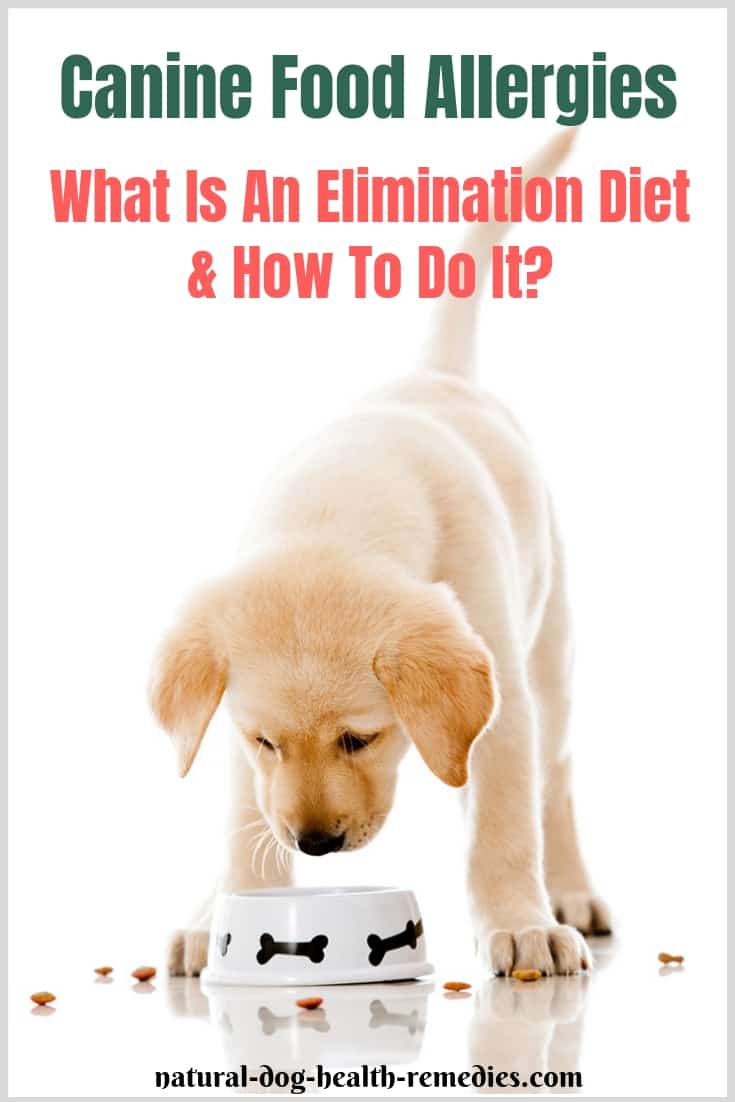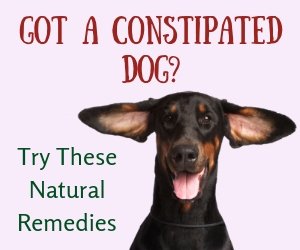Canine Food Allergies

Overview
A dog is said to have food allergies when he develops allergic reactions to one or more ingredients in his food.
Food allergies in dogs are far less common than canine atopic dermatitis and flea allergy dermatitis. It accounts for less than 10 percent of cases referred to veterinarians.
Canine food allergies can begin at any age, but are most common in dogs over 2 years of age.
If your dog shows symptoms of dog allergies, suspect canine food allergies only when you have ruled out other causes (e.g. atopy or dog flea allergies).
This article looks at the following topics:
- What causes food allergies in dogs?
- What is the difference between food allergies and food intolerance?
- What are some common food allergens for dogs?
- What are the symptoms of food allergies?
- What is a dog elimination diet?
- What is the treatment for canine food allergies?
- What is the best hypoallergenic dog food?
What Causes Food Allergies in Dogs?
It has been found that dogs who are fed consistently, day in day out, the same food source (e.g. the same brand of dog food or the same protein source for years) are more prone to develop food allergies.
As the dog's immune system has to deal with the same types of allergens for years, it ends up developing a negative reaction towards the food source.
As well, many holistic vets suggest that over-stimulating the dog's immune system (e.g. over-vaccination) can make the dog more prone to develop allergies down the road.
Some dog breeds (e.g. Golden Retrievers, German Shepherds, Cocker Spaniels, Bulldogs) are more predisposed to allergies, so some vets suspect that there is also a genetic factor that may be causing food allergies in such dogs.
What is the Different Between Food Allergies & Food Intolernace?
Do not confuse food allergies with food intolerances.
Food allergies are true allergic immune responses to a certain food (usually a protein), with such hallmark symptoms as itchy skin, hot spots, and other common skin problems seen in canine allergies.
Food intolerances, on the other hand, do not trigger allergic reactions such as itching and skin problems. Instead, they may result in diarrhea or vomiting. It's the same kind of reaction as when we have eaten something not quite agreeable with us, such as spicy or greasy foods, or diary products for those who are lactose intolerant.
Common Food Allergens
It has been found that certain ingredients in common dog foods are more likely to cause canine food allergies than others. A study in 2015 found that the most likely food allergens for dogs are:
- Beef
- Dairy products, such as milk and cheese
- Chicken
- Wheat
But of course, different dogs can react to different foods, and some dogs may also be allergic to other foods such as:
- Eggs
- Corn
- Lamb
- Soy
- Rice
- Yeast
- Gelatin
- Various spices and additives
Symptoms of Food Allergies in Dogs
Similar to other types of allergies, the primary symptom of canine food allergies is itchy skin, resulting in incessant scratching and licking.
You may also observe the following additional symptoms:
- hair loss;
- hot spots;
- chronic or recurrent ear infections;
- eyes that are red, runny, and irritated;
- swollen, itchy paws;
- digestive upsets (gas, diarrhea, or increased incidence of bowel movements);
While dogs with other types of allergies (e.g. flea bites or atopy) also show these symptoms, there are several signs that you may identify in case of canine food allergies:
- Dog with food allergies tend to have recurrent ear problems, particularly yeast infections.
- They also tend to have BOTH itchy skin and digestive issues.
- Dogs with food allergies show symptoms year-round, as opposed to those with seasonal allergies.
- The symptoms (in particular itchy skin) do not respond to conventional medication such as antihistamines and corticosteroids.
Elimination Diets - Identifying the Food Culprits
The only way to find out which food ingredient(s) your dog is allergic to is to do an "elimination diet."
Here is how it works:
If your dog has food allergies, try feeding her a novel food source consisting of 1 part protein and 3-4 parts carbohydrate for at least 10 to 12 weeks. It is important that a novel food source (i.e. food that the dog has never eaten before) be used. It could be duck and rice, or venison and millet, and so on.
During these 10-12 weeks, the dog cannot eat anything except the two novel food items. No treats! No table scraps! Just the special food and clean distilled water.
If your dog's allergy symptoms improve after the trial period, put her back on her original food (the one that you suspect is causing her the allergy.) If the symptoms return after going back on the original diet, it means that:
- one or more ingredients in the original food is the cause of her food allergy, and
- the two novel food sources do not cause allergic reactions in your dog, which is good news since you can now either prepare diets using these two food sources or get hypoallergenic dog food that contains these two food sources.
If, on the other hand, there has been no change in symptoms during the 12-week trial, then switch to another two different novel food sources and try again.
Treatment for Dogs with Food Allergies
Once the food ingredients that are causing your dog allergies have been identified, the treatment is rather simple. The bottom line is of course to exclude the food ingredients that are causing allergic reactions in your dog.
You can do so by either cooking home-made dog food for your dog, or you can get a high quality, natural, commercial hypoallergenic dog food.
If you choose to cook for your dog, be sure to use natural, and preferably, organic ingredients.
 According to Dr. Pitcairn, raw meat does not cause the same allergic reaction that cooked meat does, so a raw diet is preferred. Some dog parents have also observed that dogs prone to food allergies can tolerate organic meat much better than the usual supermarket sources.
According to Dr. Pitcairn, raw meat does not cause the same allergic reaction that cooked meat does, so a raw diet is preferred. Some dog parents have also observed that dogs prone to food allergies can tolerate organic meat much better than the usual supermarket sources.
As well, once in a while, you may want to introduce a new food source to find out if it causes allergic reactions in your dog.
Say your dog is doing fine with a diet of turkey and millet for a while. Then you may want to add chicken to her diet for two weeks.
If your dog starts to develop allergy symptoms, then you can assume that chicken is one food source that your dog is allergic to. You can then take away the chicken from the diet, wait for the dog's symptoms to clear up, and introduce a different food source such as beef, and so on.
By gradually and slowly introducing food sources (one at a time) to your dog's diet, you can eventually make up a list of foods that are safe to be fed to your dog.
Finally, if you choose to feed your dog homemade hypoallergenic diets, make sure that they are well-balanced, and enriched with vitamins, minerals, and other natural supplements.
Hypoallergenic Dog Foods
Preparing homemade hypoallergenic dog food can be time-consuming. It may also be rather difficult to be a hundred percent sure that the diet is well-balanced. If that is your concern, consider getting a high-quality, commercial hypoallergenic dog food.
Bear in mind, however, that just because a food is labeled "hypoallergenic" doesn't mean that all dogs with food allergies can eat that food.
You still need to make sure that the protein and carbohydrate in the food are the ones that YOUR dog is not allergic to.
When choosing a high-quality dog food for your dog, look for the following:
- The food contains ingredients that your dog is not allergic to (duh!)
- The first 2 to 3 ingredients on the food label are named, human-grade, animal protein sources (e.g. salmon meal, venison meat, lamb meal, etc.)
- The food doesn't contain artificial preservatives, coloring, flavors, etc.
BMC Veterinary Research 2015. Common Food Allergen Sources in Dogs and Cats
Food Allergy in Dogs and Cats: A Review
Diagnosis of Food Allergy in Dogs
R.H. Pitcairn, The Complete Guide to Natural Health for Dogs and Cats (Rodale, 2005).





